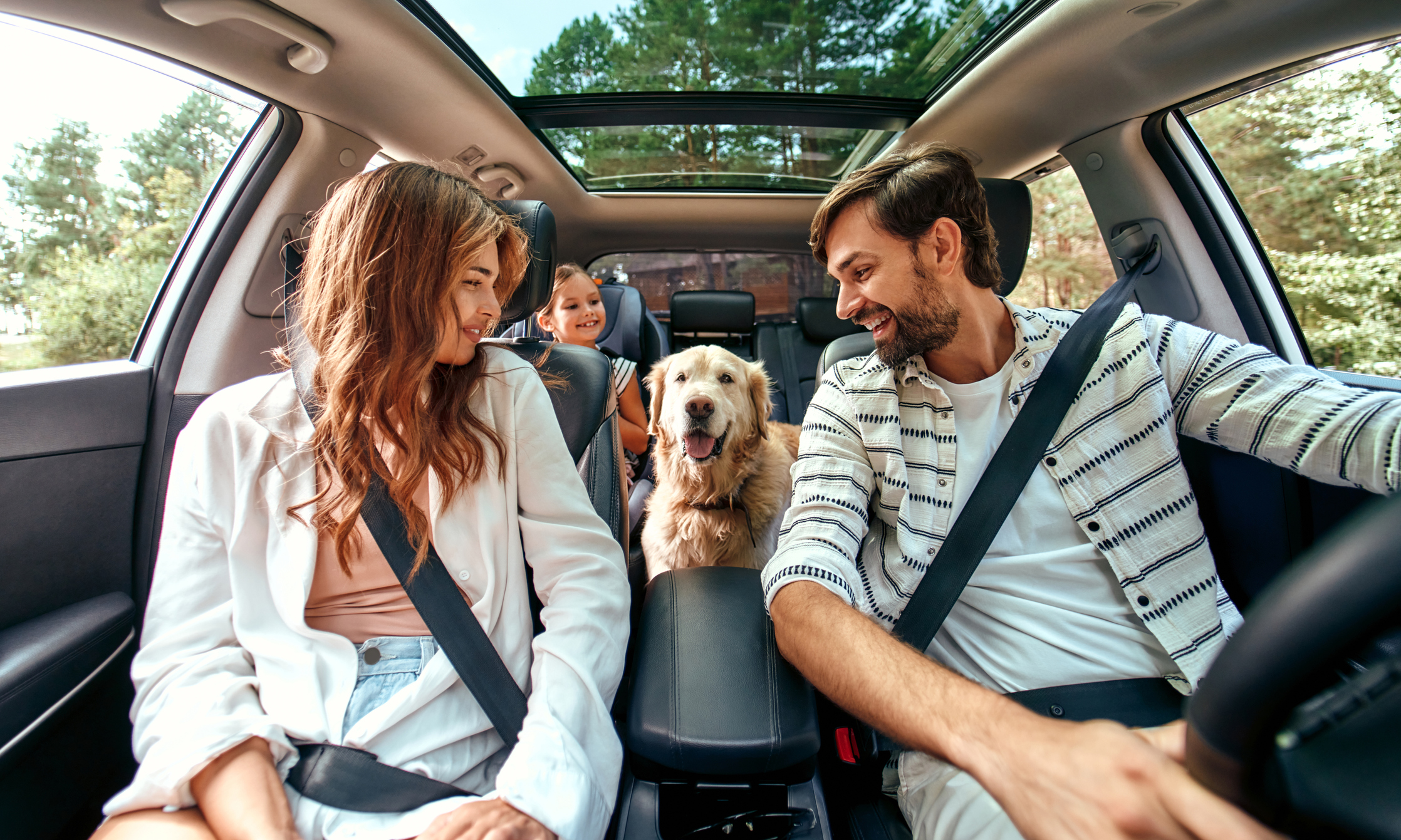Preparation is important
Plan your route. If you’re traveling by car, ensure you check for suitable rest stops for toilet breaks along the way. Schedule to stop every 2 hours for your own safety and to let your pet stretch their legs or go to the bathroom (more frequent stops may be required, though this greatly depends on your individual pet). You can find plenty of information on travelling in cars with dogs here.
If you have a new pup who is unfamiliar with travelling in the car, trial short trips around the block before you set off to see how they respond. Keep the experience positive and if your dog requires anti-nausea medication, please speak to your veterinarian.
A little tip when travelling with pets it to hold off on feeding them until you arrive at the destination. A full belly of food may lead to travel sickness, which can get messy!
Rules around confinement and restraint for pets in a vehicle vary between states in Australia. In order for your pet not to interfere with the driver, you may wish to protect them by a crate or restraint if an accident were to occur. If you are using a crate, make sure the crate is secured in your back seat or boot to prevent it from sliding. It is advised not to have pets on the front seat to prevent any further possible damage by airbags deploying in an accident. Make sure you are familiar with the rules regarding pet restraints in the area you are visiting.
Crate training can be hugely beneficial for cats and dogs. When travelling by car, air, or boat there is a good chance that they will have to be confined to a crate or travel cage at some point in the journey. You can find more about crate training here. Getting your pet used to their carrier or crate well ahead of time is beneficial to help reduce stress during your travel.
It is important to note that the interior of a car heats up extraordinarily fast, especially in summer, so ensure that pets are never left unsupervised in a vehicle. It is also important to be mindful of windows that are open during travel and ensure your pet cannot reach, fall, or jump out of the vehicle, which can cause harm to themselves or to others.
Before heading out, check that your pet’s microchip and ID tag are up to date, and ensure their collar is appropriately fitted. That way, in the unfortunate event that your pet does get lost, there are multiple ways by which your pet can be identified and therefore returned to you as quickly as possible.
Ensure your pet is up to date with preventative treatments such as flea, tick and worming treatments, to avoid other unwanted mishaps including tick paralysis.
Rules and etiquette
Wherever you go, it is important to be mindful of the rules and etiquettes that are in place. Houses, cabins, camping and vans/campers may permit dogs (and potentially cats), but checking what is or isn’t permitted ahead of time allows you to enjoy your time away.
For camping, it is a general rule that all pets must always be on leash for the safety and wellbeing of not only your pet, but other pets and people. It is also common for accommodation to require your pet to not be left unattended. Another consideration even when the accommodation allows pets, is to check whether it is suitable for your pet (i.e. stairs, fencing, other animals/people, balconies or decking, pools and other waterways). Ensure you take everything your pet may need whilst away including their own food, water bowls, bedding, toys, and medications (if required).
New environments can be very stimulating (either exciting or stressful) for our pets. Always keep your dogs on lead in unfamiliar environments. Dogs may respond differently in new environments than at home. Be mindful of wildlife that your pet may not previously be exposed to. Observe local laws regarding picking up after your pet, where your pet may be allowed, and when dogs are allowed to be off lead.
If you are heading out for the day and cannot take your pet, some boarding kennels or dog day care centres offer day stays. Most places often require proof of vaccination so be sure to have that handy.
Cleaning up after your pet is essential. Ensure you always have bags and be prepared to take any waste back with you as bins may not be available. On a similar note, take a bowl and plenty of drinking water as portable water isn’t always available.
Pet insurance can help by covering a portion of the eligible vet bill if the unexpected happens. Because it is difficult to predict the costs of veterinary care, it can help to have measures in place to help prepare for the unexpected. Check out our partner network and explore our policy tools to find a pet insurance policy.
Not all conditions or items are covered by Pet Insurance. Refer to the applicable Product Disclosure Statement for information about coverage and exclusions.



 Fact checked
Fact checked





